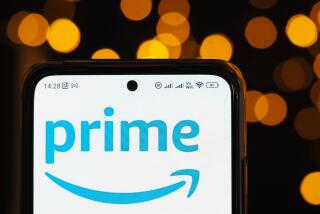Dizzying Array of Options in Phone Service
- Share via
Congress approved a sweeping telecommunications law earlier this year, ushering in a new age of telecom competition. Among the industries feeling the biggest impact is the telephone industry. Here are some answers to issues affecting consumers:
*
Q There already seems to be a lot of phone competition--I get pitches from long-distance carriers and cellular phone companies all the time. What’s going to change?
*
A While there is some price competition among long-distance carriers and recent discounting by many cellular providers in response to the introduction of other mobile phone services, experts say widespread competition in local phone service is at least three years away for most consumers. That’s because building a local network is a complex and costly undertaking. In the first phase of competition, major long-distance carriers such as AT&T; and MCI will begin reselling to consumers local phone service they purchase wholesale from local phone operators. Later they will build their own systems. Those players could be joined by cable TV operators and wireless providers, which would foster enough competition to trigger significant rate declines.
*
Q Cable TV? You mean I’ll get telephone calls on my TV set?
*
A Not exactly. But engineers have demonstrated that cable TV wires can carry more calls than conventional phone wires. Since cable TV wires already enter more than 80% of American households, cable is seen as a natural competitor to the regional Bell telephone companies that now provide most of the nation’s local phone service. Several cable operators are already working hard to reconfigure their systems to carry not only video programming, but phone calls and access to the Internet. You’ll still see the traditional coaxial cable TV wire, but once it enters your home it will connect to three separate devices: a cable TV decoder box on the television set, a cable modem for access to the Internet and a regular telephone to make and receive calls.
*
Q Wow, all that from one wire. That sounds too good to be true. What’s the downside?
*
A None really, except that since many operators borrowed heavily to build their cable systems in the first place, some experts doubt they will have the money to expand significantly at a time when federal regulators have capped most cable TV subscriber rates. For that reason, most experts think the wireless industry--cellular phone companies, for example--will pose the main competition to traditional phone service.
*
Q Speaking of wireless, aren’t there several kinds of wireless services available? How do I decide which is the best?
*
A Besides traditional paging services, a number of wireless services have appeared in recent years, including satellite phones. But the biggest potential rival to traditional cellular phone service is PCS, which stands for personal communications services. PCS, commercial mobile radio and cellular systems all use similar-size handsets, but PCS and commercial mobile radio are 100% digital services, which means calls are more resistant to interception and distortion because they are transmitted in the precise ones and zeros of computer code rather than as a copy of the actual frequency wave produced by the human voice.
*
Q PCS sounds great. Will it replace cellular phones?
*
A That’s difficult to say. There are about half a dozen competing formats of PCS, which is currently available only in Hawaii; Washington, D.C.; and a few other markets. Therefore, users may be unable to use a PCS phone outside their home region at first, as is possible with cellular phones. What’s more, many of the big financial backers of PCS are cellular phone providers that simply want PCS to fill in holes in their service coverage. As a result, many experts expect PCS and cellular to coexist for many years to come.
*
Q Pagers, cellular phones, commercial mobile radio, PCS--why so many different wireless devices? Pretty soon my car seat is going to be as littered as my coffee table with wireless remotes.
*
A On this score, help is on the way as manufacturers continue their feverish push to miniaturize mobile communications. Handsets, once the size and weight of telephone books, have shrunk to the size of a deck of cards. Last month, Nokia, Europe’s largest maker of cellular phones, began shipping its 12.5-ounce All-In-One communicator, capable of receiving telephone calls, pages and even Internet e-mail. The device is currently available only in Europe, but the company says it’s considering introducing it in the U.S. soon.
More to Read
Inside the business of entertainment
The Wide Shot brings you news, analysis and insights on everything from streaming wars to production — and what it all means for the future.
You may occasionally receive promotional content from the Los Angeles Times.










